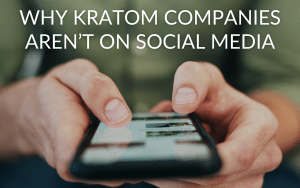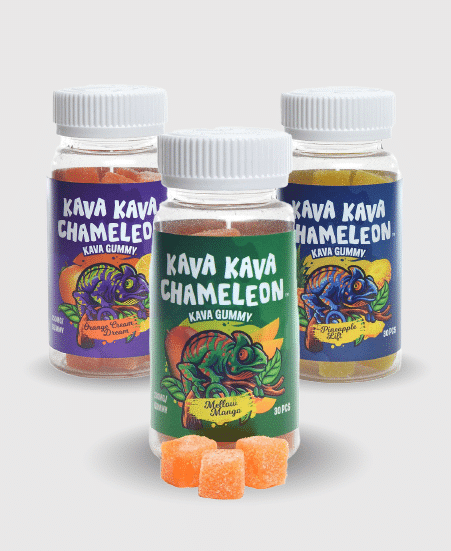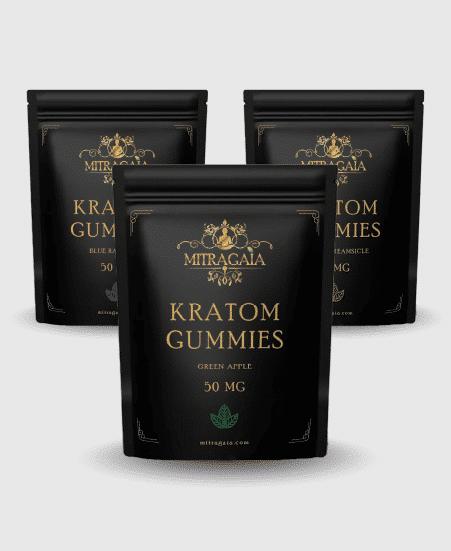Why Kratom Companies Aren’t on Social Media: The Challenges of Marketing a Controversial Plant
In recent years, kratom has gained increasing popularity as a natural botanical with unique benefits, often used to uplift mood, enhance energy, and promote balance. However, despite its growing use, you may have noticed that kratom companies are conspicuously absent from mainstream social media platforms like Facebook, Instagram, and Twitter/X. In a digital age where businesses rely heavily on social media for marketing, community-building, and customer engagement, this absence raises an important question: Why aren’t kratom companies on social media?
The answer is more complex than it seems. Kratom companies face numerous challenges that make it difficult to maintain a presence on these platforms, including legal uncertainty, advertising restrictions, and public misconceptions. In this article, we’ll explore the hurdles kratom companies encounter and what it means for consumers looking to connect with their favorite brands.
What is Kratom?
Before diving into the challenges of marketing kratom on social media, it’s important to understand what kratom is.
Kratom (Mitragyna speciosa) is a tropical tree native to Southeast Asia, where it has been used for centuries. Traditionally, locals would chew the leaves or brew them into tea to boost energy or promote relaxation. The plant’s active compounds, primarily mitragynine and 7-hydroxymitragynine, interact with receptors in the brain, leading to effects that range from stimulating to soothing, depending on the dosage.
In recent years, kratom has gained a devoted following in the West as an herbal supplement to support overall well-being. However, its rising popularity has also been accompanied by controversy, largely due to regulatory concerns and its association with other substances. This controversy plays a significant role in why kratom companies struggle to establish a presence on social media.
The Challenges Kratom Companies Face on Social Media
While many businesses thrive on social media, kratom companies face unique obstacles that prevent them from utilizing these platforms fully. Here are some of the key challenges:
1. Legal and Regulatory Uncertainty
One of the primary reasons kratom companies struggle with maintaining a social media presence is the legal uncertainty surrounding the plant. Kratom is legal in many parts of the U.S., but some states—such as Alabama, Indiana, and Wisconsin—have banned its sale and use. Additionally, regulatory bodies like the FDA have expressed concerns about kratom, citing potential risks.
Because of this patchwork of regulations, kratom falls into a “gray area” when it comes to legal policies. Social media platforms, especially U.S.-based ones like Facebook and Instagram, have policies that restrict the promotion or sale of substances that are considered illegal or regulated, even if they are legal in certain regions. As a result, kratom companies often face account suspensions, post removals, or outright bans, limiting their ability to engage with customers.
2. Strict Advertising Restrictions
Another significant hurdle is the advertising policies enforced by platforms like Facebook, Instagram, and Twitter/X. These platforms have strict guidelines prohibiting the promotion of “illegal, prescription, or recreational drugs.” Unfortunately, kratom, despite being legal in many regions, often gets lumped into this category.
This means kratom companies are not allowed to run paid advertisements on social media, a major disadvantage when trying to grow an audience or spread awareness. Without the ability to advertise, kratom companies find it much harder to reach new customers or promote educational content about responsible kratom use.
3. Content Moderation and Censorship
Even when kratom companies do manage to establish a social media presence, they often face constant challenges with content moderation. Platforms like Facebook and Instagram use automated algorithms that flag posts containing certain keywords, including “kratom,” which can result in content removal or account suspensions.
For example, posts discussing the benefits of kratom, sharing customer testimonials, or even providing educational information can be flagged for violating community guidelines. This not only disrupts a company’s ability to communicate with its audience but also creates a fear of being permanently banned. As a result, many kratom businesses avoid social media altogether or maintain a low-profile presence.
4. Misinformation and Public Perception
Kratom is often misunderstood, and misinformation about its effects, safety, and legal status is widespread. This negative public perception adds another barrier for kratom companies on social media. While many kratom users rave about its ability to support their well-being, others associate it with addiction or misuse, which fuels misconceptions.
For kratom companies trying to build trust and educate consumers, fighting against misinformation can be a significant setback. Negative comments, false reports, and public misunderstandings about kratom often lead to challenges in maintaining a positive reputation online.
5. Lack of Support from Social Media Platforms
Unlike more mainstream industries, kratom companies frequently face a lack of support from social media platforms. When a kratom company’s account is suspended or flagged, it can be extremely difficult to resolve the issue. Many businesses report that appeals to these platforms go unanswered, and even when responses are received, the chances of reinstatement are slim.
This lack of recourse further discourages kratom companies from using social media as a key marketing tool, pushing them toward alternative methods of engagement.
What Alternatives Are Kratom Companies Using?
Given the challenges of operating on mainstream social media platforms, many kratom companies have turned to alternative strategies to connect with their customers. These include:
1. Email Marketing
Without access to social media ads, kratom companies have turned to email marketing as one of their primary channels for communication. Email allows businesses to send promotions, educational content, and updates directly to their customers without the risk of censorship or account bans. It’s a more direct and controlled way to engage with their audience.
2. Private Communities
To foster a sense of community, many kratom companies have established private groups on platforms like Reddit or created their own dedicated forums. These spaces allow for open discussions and customer engagement without the threat of account removal. While these communities can be effective, they lack the visibility and reach of mainstream social media platforms.
3. Search Engine Optimization (SEO)
With social media advertising restricted, kratom companies are focusing heavily on SEO to drive organic traffic to their websites. By optimizing content around specific search terms like “kratom benefits” or “best kratom strains,” companies can rank higher on search engines like Google. This approach allows businesses to attract consumers through non-paid channels, offering educational content and product information.
4. Direct Outreach and Influencer Partnerships
Some kratom companies are leveraging influencer partnerships and collaborating with bloggers to increase brand visibility. By working with trusted influencers who align with their brand values, kratom companies can reach new audiences without the restrictions of traditional social media platforms.
Why It Matters for Consumers
For consumers, the absence of kratom companies on social media makes it more challenging to access reliable information and engage directly with the brands they trust. Social media is often the go-to platform for consumers seeking reviews, asking questions, and staying informed about new products. Without a strong social media presence, consumers may find it difficult to connect with kratom brands and learn about responsible use.
Additionally, the lack of advertising opportunities for kratom companies can make it harder for consumers to discover new products or educational resources. Since kratom requires a responsible approach to consumption, this gap in communication can be concerning for new users who are looking for guidance.
The Future of Kratom on Social Media
While the current landscape is challenging, there is hope that the situation could change in the future. As more research is conducted on kratom and its potential benefits, there may be a shift in how social media platforms and regulators view the plant. Advocacy groups like the American Kratom Association (AKA) are working to ensure that kratom remains accessible and are pushing for fairer regulations that could eventually make it easier for companies to operate online.
Until then, kratom businesses will continue to innovate and find alternative ways to connect with their audience, from email newsletters to private communities.
Conclusion
The absence of kratom companies on social media is the result of numerous challenges, from legal uncertainties to strict advertising restrictions. While social media plays a crucial role in the growth of many businesses, kratom companies face a unique set of hurdles that limit their ability to fully participate in these platforms.
As consumers, it’s important to seek out reliable sources of information and connect with kratom brands through alternative channels such as email newsletters, private forums, and direct outreach. Though the current restrictions may be frustrating, the future may hold more opportunities for kratom companies to engage with their audience and foster a broader understanding of this natural plant.








